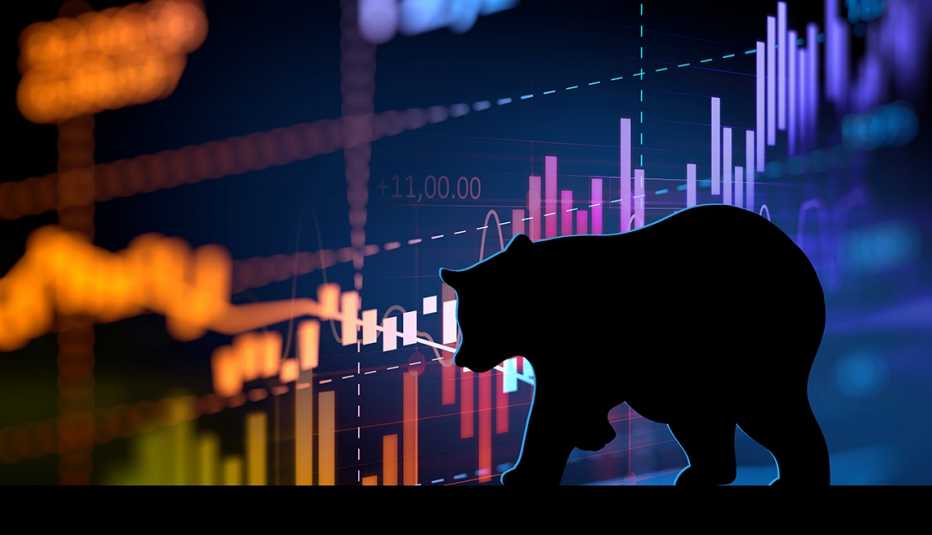Staying Fit


Stocks are officially in a bear market. Let’s look at what causes bear markets, and how they affect older investors who are saving for retirement or have already retired.
A bear market is, by definition, a 20 percent decline from the most recent market high. By that definition, the Standard & Poor’s 500 stock index, the benchmark index that measures the performance of 500 of the largest 500 U.S. companies, peaked Jan. 3, 2022 and entered the bear cave on June 13, 2022. The Nasdaq stock index peaked in November 2021 and bedded down with the bear in March 2022. And finally, the venerable Dow Jones Industrial Average joined the party on Sept. 26, 2022.


AARP Membership— $12 for your first year when you sign up for Automatic Renewal
Get instant access to members-only products and hundreds of discounts, a free second membership, and a subscription to AARP the Magazine.
The carnage within some stocks in the Nasdaq 100 has been, well, grisly. Netflix shares, for example, have plunged 68 percent from a high on Nov. 17, 2021. Online payment company PayPal is down 70 percent from its high; drugmaker Moderna is down 72 percent.
Bear markets since 1929
| Year | Number of days | Decline amount | Months to break even |
|---|---|---|---|
| 1929 | 998 | 86% | 268 |
| 1933 | 604 | 34% | 7 |
| 1937 | 390 | 55% | 94 |
| 1938 | 1266 | 46% | 34 |
| 1946 | 353 | 28% | 37 |
| 1948 | 363 | 21% | 12 |
| 1956 | 446 | 22% | 11 |
| 1961 | 196 | 28% | 14 |
| 1966 | 240 | 22% | 7 |
| 1968 | 543 | 36% | 21 |
| 1973 | 630 | 48% | 69 |
| 1980 | 622 | 27% | 3 |
| 1987 | 101 | 34% | 20 |
| 2000 | 929 | 49% | 56 |
| 2007 | 517 | 57% | 49 |
| 2020 | 33 | 34% | 5 |
| Average | 514 | 39% | 44 |

































































More on money
Scared by the Stock Market?
Understand what the credit downgrade, market volatility mean for your retirement.Raiding Your Retirement Plan Is Expensive
Check out all your alternatives if you need cash in a hurry
Whip Inflation With I Bonds
Safe, high-yielding investments from the U.S. Treasury